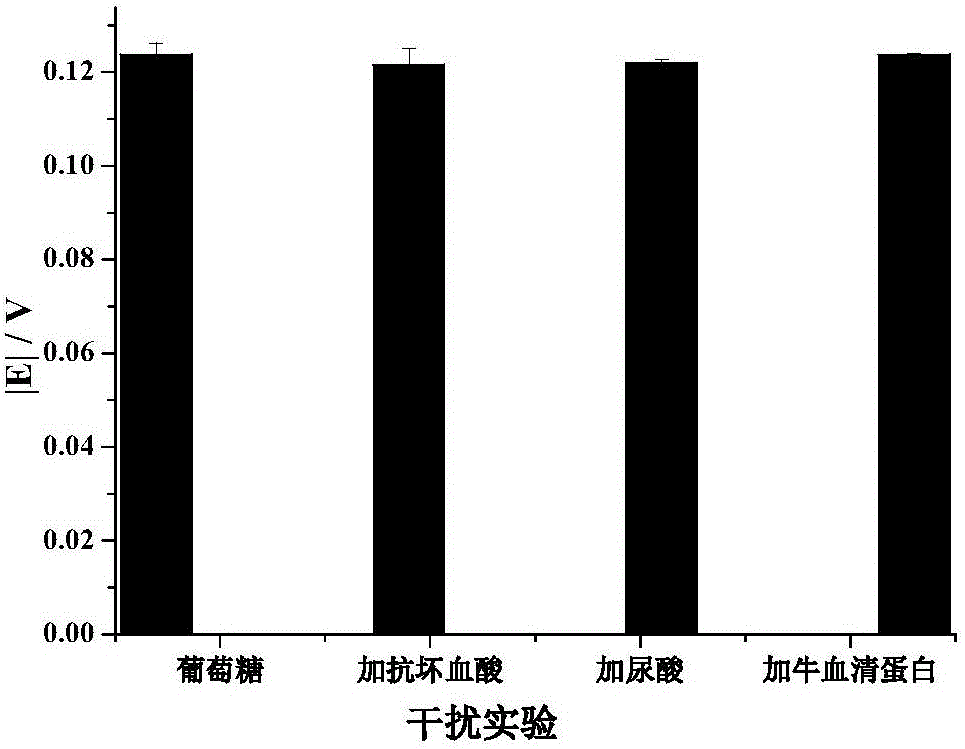Sensor based on concentration cell principle
A concentration battery and sensor technology, which is applied in the field of chemical sensing, can solve the problems of increasing cost, increasing electrode manufacturing steps, and complex blood components, and achieves the effects of low cost, improved detection accuracy, and simple manufacturing process
- Summary
- Abstract
- Description
- Claims
- Application Information
AI Technical Summary
Problems solved by technology
Method used
Image
Examples
Embodiment 1
[0027] Example 1 Using a sensor based on the principle of a concentration cell to detect blood sugar
[0028] For blood glucose detection, the reaction reagent in the first electrochemical cell 3 is a 0.01M phosphate buffer solution (pH7.4) containing 5kU / mL glucose oxidase and 500mM potassium ferricyanide. The reaction reagent in the second electrochemical cell 4 is 0.01M phosphate buffer solution (pH7.4) containing 500mM potassium ferricyanide. Before testing, the system was freeze-dried.
[0029] During the detection, the blood sample to be tested is added to the electrochemical cell, mixed with the reaction reagent and reacted for 200 seconds, and the electrical signals on the two electrodes are detected by the electrochemical workstation. By detecting the standard blood sample (that is, the blood sample with known concentration of the analyte), the quantitative relationship between the blood glucose concentration and the detection signal can be obtained, that is, the sta...
PUM
 Login to View More
Login to View More Abstract
Description
Claims
Application Information
 Login to View More
Login to View More - Generate Ideas
- Intellectual Property
- Life Sciences
- Materials
- Tech Scout
- Unparalleled Data Quality
- Higher Quality Content
- 60% Fewer Hallucinations
Browse by: Latest US Patents, China's latest patents, Technical Efficacy Thesaurus, Application Domain, Technology Topic, Popular Technical Reports.
© 2025 PatSnap. All rights reserved.Legal|Privacy policy|Modern Slavery Act Transparency Statement|Sitemap|About US| Contact US: help@patsnap.com



